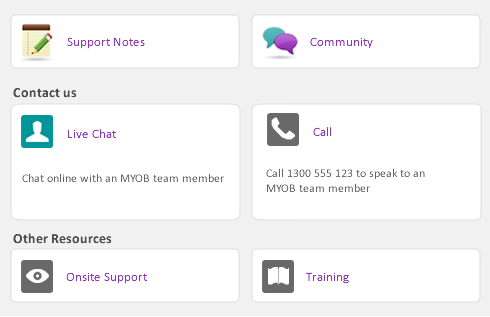Once you have created payroll categories (see Creating payroll categories) and an employee card (see Creating employee cards), you can enter the employee’s payroll information.
If you want to prevent a user from editing and viewing all payroll details, you need to restrict access to payroll reports as well as to employee card information and Payroll command centre functions. You can set these restrictions in the access profile of each user ID. For more information, see Managing user accounts.
|
1
|
|
2
|
Click the Employee tab and select an employee.
|
|
3
|
|
4
|
Click the Payroll Details tab
|
If the employment classification you require does not appear in the list of classifications, you need to add it to the list. You can do this in the Employment Classification List window (go to the Lists menu and choose Employment Classifications).
|
6
|
If this employee is a contractor that you are paying for building and construction services, select Other from the Employment Basis list. Then, in the fields that appear, select the Report on Taxable Payments option and enter their ABN or TFN.
|
7
|
Click Wages and enter the wage information for this employee.
|
When you select a pay basis, the corresponding payroll category for paying wage amounts is automatically selected in the Wage list. If you select Hourly, the Base Hourly wage category (or the name you assigned to this category) is selected. If you select Salary, the Base Salary wage category (or the name you assigned to this category) is selected.
|
c
|
Select the employee’s pay frequency in the Pay Frequency field.
|
|
d
|
In the Hours in [...] Pay Period field, type the number of hours in the employee’s normal pay period.
|
|
e
|
If the employee’s wage expense account is different from the default account, in the Wages Expense Account field, type or select the required account.
|
|
f
|
If the employee receives commissions, select the Linked Commissions Category from the drop down list.
|
|
8
|
Click Superannuation and enter the employee’s superannuation details.
|
To meet your choice of superannuation fund obligations, you need to provide eligible employees with a Standard Choice Form and make contributions to their nominated complying fund. For more information about your obligations, contact the ATO.
|
a
|
If you need to provide a Standard Choice Form to this employee, click Print Superannuation Choice Form and then click Print in the Review Employees Before Printing window that appears. The Card Information window reappears.
|
|
b
|
In the Superannuation Fund field, type or select your employee’s nominated fund. If your employee’s superannuation fund does not appear on the list, you need to create it. For more information, see Superannuation reporting.
|
|
c
|
Type the employee’s fund membership number in the Employee Membership # field.
|
|
d
|
Click in the select column (
|
|
9
|
Click Entitlements and click in the select column (
|
|
10
|
Click Deductions and click in the select column (
|
|
11
|
Click Employer Expenses and click in the select column (
|
|
12
|
Click Taxes and enter the employee’s tax details.
|
|
a
|
Type the employee’s tax file number in the Tax File Number field.
|
|
b
|
Select the employee’s tax table from the Tax Table list.
|
|
c
|
If you selected Withholding Variation from the Tax Table list, type the variation rate in the Withholding Variation Rate field.
|
|
d
|
If the employee is claiming a tax rebate, type the total rebate amount in the Total Rebates field.
|
|
e
|
|
13
|
|
a
|
If necessary, change the employee’s default pay details by overriding the values that appear in the Hours or Amount column next to a payroll category.
|
If you use timesheets to record all hours worked by an employee, enter zero as the default hours for the Base Hourly payroll category.
The value of a payroll category with Calculated displayed in the Hours or Amount column is calculated when you process a pay. For example, tax amounts and entitlement hours where hours are calculated as a percentage of the gross hours paid.
|
b
|
[Optional] If you want to assign a job number to a payroll category for this employee, click in the Job column and enter or select a job number.
|
|
14
|
If you have already paid the employee in the current payroll year, click Pay History and type the amounts you have paid in the Activity column next to each relevant payroll category. You can enter pay history for specific months, quarters or for the year to date.
|
Amounts entered in the Pay History window appear on payment summaries and reports not derived from payroll activity (such as register reports). They are not recorded as transactions in your accounts.
|
15
|
If you use the Time Billing function to track time the employee spends to complete work for clients and customers, click Time Billing and enter the employee’s time billing rate and cost per hour. For more information, see Billing for time.
|
|
16
|
Click the Payment Details tab and select the method you use to pay the employee in the Payment Method list.
|
|
17
|
|
a
|
|
c
|
Enter the statement text (Account 1 only) you want to appear on the employee’s bank statements.
|
|
d
|
If you are distributing to more than one account, in the Value field, type the amount or percentage of the pay to be deposited into the account and select the distribution method (Percent or Dollars) from the list. Note that the final account will receive the remaining amount of your employee’s net pay.
|
|
18
|
|
19
|



